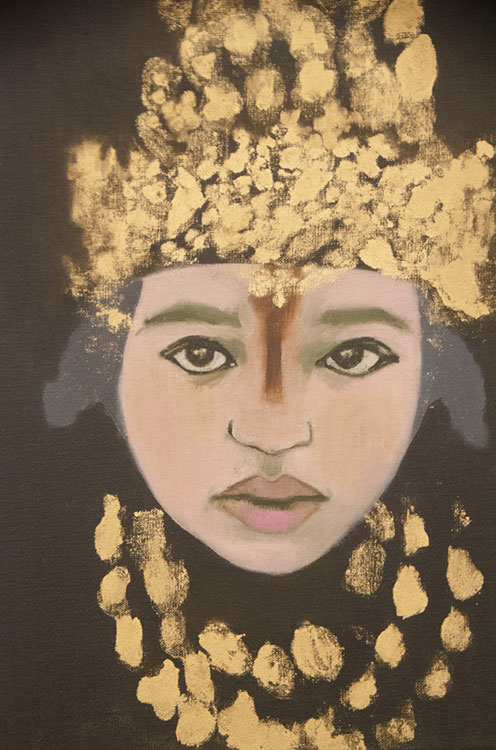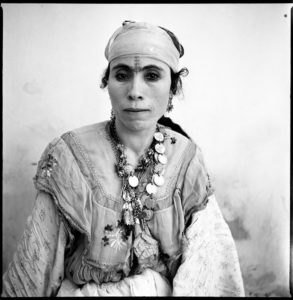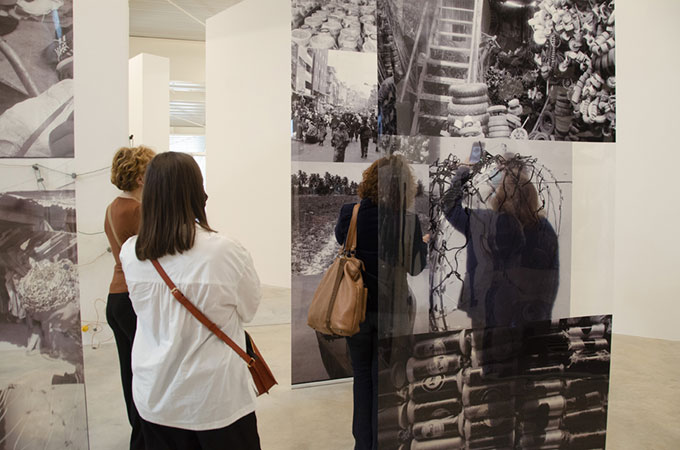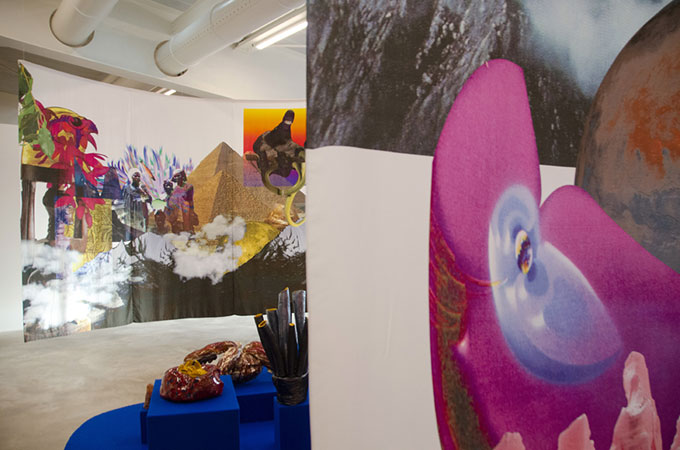Posted on March 30, 2021 in Arts & culture.
Mémoria exhibition, 14 African artists in Bordeaux
At the initiative of the Frac Nouvelle-Aquitaine MÉCA * in Bordeaux, the exhibition Memoria: narratives of another History, puts into perspective until August 21 works by African artists still little exhibited in France. Discovery…
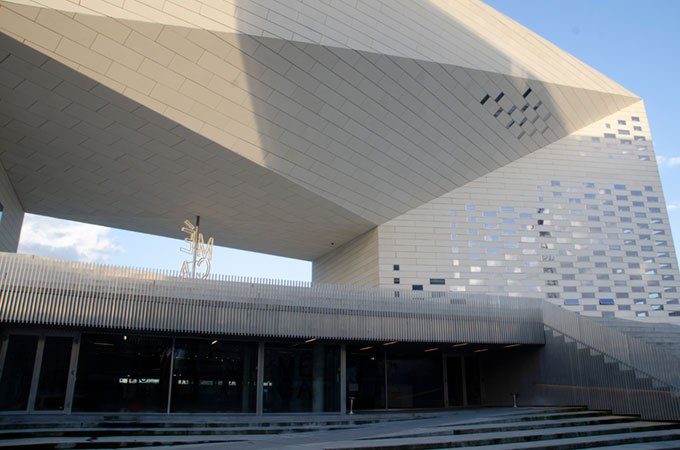
© David Raynal
The exhibition Memoria: tales of another History is the idea of a collective memory made up of a myriad of tales, stories, questions and experiences scattered throughout our individual, personal and intimate memories. . It is revealed here through the works of 14 African artists whose work refers to the construction of a common whole, a universal whole, which renews our look at contemporary creation from Africa and its diasporas. When speech and memory are forgotten, killed, erased, or truncated, unveiling a counter-narrative, making plural stories coexist, and revealing the unspoken, then becomes an emergency to which the fourteen invited artists respond to this event. exposure. Their works presented stand out for their desire to move the boundaries of art, to “bring together elsewhere” and to show the diversity of our common individual and ultimately collective histories. The selected works explore painting, textiles, sculpture, video or even performance. They make up a journey that echoes a demystified reading of sections of history and commonly disclosed beliefs about the African continent. Through this multiplicity of mediums, the works deliver their essence and show us artists with engaged practice, strong in their narrative power, anchored in their fluctuating geographies and in their time. The size of its case, the MÉCA, Memoria: narratives of another History welcomes until August 21 the works of artists still little exhibited in France: Georgina Maxim, Na Chainkua Reindorf, Enam Gbewonyo, Tuli Mekondjo or even Josèfa Ntjam. It will also make room for works by recognized artists of the contemporary art scene such as Otobong Nkanga, Bouchra Khalili, Mary Sibande, Wangechi Mutu.
14 artists, 26 works and 54 countries
It is Sophie, the sublime and benevolent avatar of the South African Mary Sibande, who inaugurates the exhibition route, inviting us to re-examine the history of her country through her own family story; that of a line of strong and courageous women to whom the artist pays masterfully homage in a meticulous memorial work (photography and sculpture on a human scale modeled on the artist herself). “Mary Sibande takes up the story of her own family in which all women were servants in the service of whites under the apartheid regime from 1948 to 1991. Sophie was the generic name given to black servants to avoid having to name them by their South African first names. The sculpture presented is in the image of Mary Sibande. With her Victorian-style dress, she gives a form of majesty to Sophie but which nevertheless retains all the attributes of the cleaning lady ” explain Nadine Hounkpatin and Céline Seror, the curators of the exhibition and founders of the artness agency.
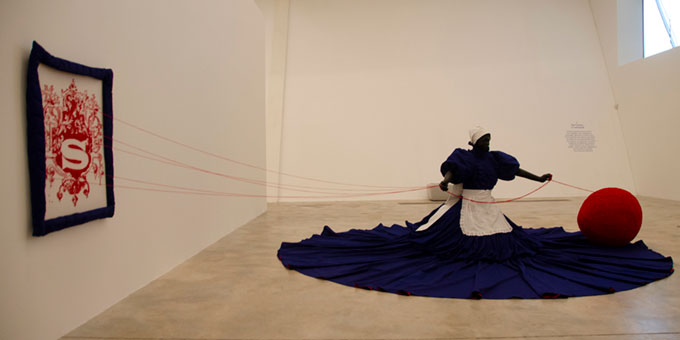
© David Raynal
From the intimate to the universal
This first chapter of the exhibition, From the intimate to the universal, explores the different paths taken by artists to write their personal experiences and make their stories heard. Alongside Mary Sibande, the “memory works” by the Zimbabwean Georgia Maxim are presented, heterogeneous textile pieces intimately linked to individuals and their memory, as well as the dreamlike and deep paintings of the Namibian Tuli Mekondjo, in which mingle plant motifs, seeds, and details from archival photographs from Namibia's national heritage. The works of the Ghanaian artist Enam Gbewonyo, shown for the first time in France, constitute a highlight of the exhibition. Her performance Nude Me / Under the Skin: The Awakening of Black Women's Visibility one Pantyhose at a time testifies to her experience as a black woman in a world that seems to her consciously and unconsciously hostile. It is flesh-colored nylon stockings, an intimate and everyday object, that the artist chooses to use as a symbol and vector of inequality and invisibility. This same symbolism of tights can be found in the work of the Franco-Gabonese Myriam Mihindou who, with her performance filmed in a fixed shot, La Robe envolée, delivers to us through words and through her body, a story of great strength, imprinted of poetry.
Highland women
For her part, Dalila Dalléas Bouzar uses painting to remind us of the history of Algeria through the evocation of these women from the highlands of southern Kabylia, forced to reveal themselves during the war of independence. Women to whom the artist magnificently restores grandeur and power through a series of twelve striking portraits. “In this project entitled The Princesses, Dalila carried out research on the war in Algeria, her country of origin. She came across portraits commissioned by the French army from a photographer Marc Garanger. She was extremely moved and overwhelmed by these looks and in turn wanted to appropriate the constrained experience of these women to try to restore their dignity and their power. She puts them on a black background, with a penetrating gaze that in turn challenges us with our gaze, rather than being challenged by the camera lens. She adorned them with gold crowns to give them the status of princesses which is interpreted not only as reparation, but also as recognition of their act of resistance ” explains Nadine Hounkpatin.
Stunned by the gaze
Small step back. Marc Garanger is a French photographer and filmmaker (1935-2020) known for his black and white portraits of Algerians, taken between 1960 and 1962, on behalf of the French army, and for which he received the Niépce Prize in 1966. Soldier in Algeria from March 1960 to February 1962, his mission was to identify Algerian peasant populations and to photograph them in the villages. The army had in fact decided that the natives should have a French identity card to better control their movements in the “regroupment villages”. To make these portraits, he had to ask the women to reveal themselves. “I remembered the photos of the American Edward Curtis who photographed the Indians being destroyed by the American people at the end of the 19th century. I told myself that this was the story starting all over again. So I did not take identity photos, but portraits in majesty framed at the waist to give these women all their dignity ” he explained to TV5 Monde journalist Camille Sarret, who came to question him about his work during his exhibition in 2012 at the Algerian Cultural Center in Paris for the 50th anniversary of Algerian independence. In each village, Marc Garanger made the women sit on a stool against the white wall of their house. Seized in their privacy, the women bowed to orders without flinching. “With the exception of the younger ones who were probably more frightened, they glared at me. But I knew what I was doing, ”he still remembers. In 2004, he returned to Le Monde in Algeria to meet the people and places he had photographed forty years earlier. “There was a crazy emotion. All the women I found have remained in their Berber civilization! " he had finally explained.
Duty of memory
The second part of the tour, When Memory is a Political Work, questions memory in its critical dimension: the way in which artists use it as a method of denunciation, particularly in the fields of redistribution and exploitation of human resources, natural and material. The research, work and radical approaches of Nigerians Otobong Nkanga (series of photos taken from a performance) and Ndidi Dike (multimedia installations), pose the latent and current question of social, geopolitical and environmental issues that they deliberately address under the prism of slavery heritage and colonial memory. These are the same issues that we find in the work of Bouchra Khalili, who through his video series The Speeches Series, gives a voice to those we point the finger at, those that we set aside, to precarious workers in the United States to migrants and displaced persons, thus making their voice audible, their history visible. With the photographer Gosette Lubondo, it is the duty of memory that allows a free criticism of a part of the colonial history of her country the Congo. Through the Imaginery Trip II series, a silent show of the decay of traces of the past, the artist manages to give us a glimpse of the resurrection of a possible universal memory.
Multitude of shades
Finally, the third and last chapter of the journey, Fabulations, fictions et autres imaginaires, lifts the veil on a creative, uninhibited future, with a strong memory that is assumed and celebrated. An endless dialogue is established between art, science, new technologies. It is these new languages that the Franco Cameroonian Josèfa Ntjam is inventing by creating futuristic stories in each of her installations, performances, photomontages or plastic creations. For her part, the Ghanaian Na Chainkua Reindorf - through sculptural works incorporates organic materials, threads, pearls, all woven, spun, sewn in a clever mix of history (s) and West African techniques. The work on display was produced as part of the artist's residency in Bordeaux at the Frac de Nouvelle-Aquitaine. A residence impacted by Covid-19 since it was carried out entirely remotely.
Carnival costume
Na Chainkua Reindorf is a Ghanaian who lives in New York and reinterprets in her own way the tradition of carnival costume in its purest essence. Before her remote residence, she knew nothing of Bordeaux except wine. Her interest grew when she learned that the city had participated to some extent in the slave trade. Bordeaux also bears the memory of slavery. At the entrance to the buildings, we find, for example, architectural elements which have in particular the effigy of African faces in reference to the triangular trade. These are the mascarons. She then discovers the word mascaron which naturally resonates with the word mask and masquerade and which soon becomes her common thread. “From there, she created this work which consists of a carnival masquerade costume and made a series of masks that pay homage to the mascarons. She also came across a rather tragic story of African women who were torn from their native shores to become slaves. Rather than accept this fate, they threw themselves overboard. She wanted to pay homage to them by inventing these costumes and this series of masks in which we will find her favorite materials, fabric, pearls and cowries. Shells that can be found everywhere on the shores of Africa and which once served as currency. She hung them in homage to the African faces that dot the buildings of the city of Bordeaux, ”emphasizes Nadine Hounkpatin.
Fantastic painting
Senegalese Selly Raby Kane - imagines, for her part, an African capital fantasized in a virtual reality film, which perfectly echoes the work of Wangechi Mutu and his fantastic painting inviting each viewer to decode the world with the help of of a new visual grammar. It is thus a whole mythology populated by creatures with still feminine attributes that the Kenyan artist arouses. A transgressive mythology in which the female body is the matrix carrying the marks of language and multitudes of nuances of world cultures.
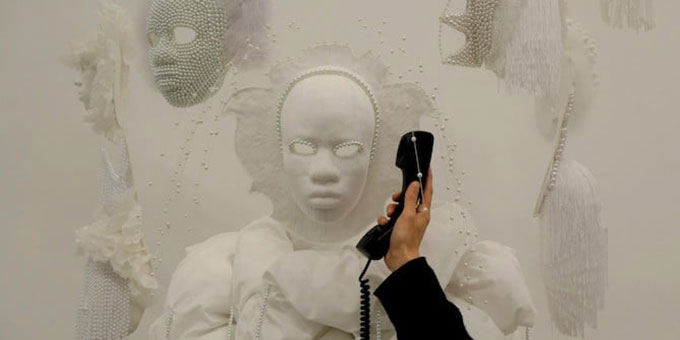
© FRAC
Change of scale
The move into the MÉCA in May 2019, near the center of Bordeaux and the Saint-Jean train station, corresponds for the Frac Nouvelle-Aquitaine to a change of scale (building, team, projects) and to new challenges to overcome. Housed on the top 3 floors of the MÉCA (4th, 5th and 6th) on a 1 m200 exhibition space, the Frac Nouvelle-Aquitaine MÉCA collection is considered one of the finest public collections of contemporary art. It brings together 2 works, all mediums combined, from French and foreign artists. In addition to the MÉCA program, the Frac offers more than twenty exhibitions in the region. The exhibition Memoria: tales from another History is finally the highlight of the regional program: ALIVE! This series of exhibitions and events taking place in New Aquitaine focuses on the representation of women in art, while exploring issues related to the exhibition and (re) reading of the works of women artists. , whether contemporary or from earlier periods. Initially scheduled from June to December 1, the Africa316 Season desired by the President of the Republic Emmanuel Macron has been postponed due to the Covid-2020 pandemic which has hit the whole world. Through these eyes of conscious and enlightened artists, the exhibition Memoria: narratives of another History, also evokes the dynamism of research into women's work in the field of art, both from a historical point of view than current on the scale of the African continent.
David Raynal
* FRAC: Regional Contemporary Art Fund
* Méca: House of the creative economy and culture
During the health crisis, the MECA is closed but it has ideas!
For health reasons the museum is closed but while awaiting its reopening, the Frac Nouvelle-Aquitaine MÉCA team is trying to use the exhibition in the most intelligent way and in different forms. To bring the exhibition to life at a distance while respecting barrier gestures, it has in particular set up small interviews with the artists who are broadcast on its site and on social networks. It also organizes interviews with the curators and also supports the release of the catalog with Actes Sud. She also initiated “Insights on a work”, live Instagram video capsules organized by mediators who comment on each work throughout the duration of the exhibition. Never short of ideas, she has launched hotlines that allow you to make an appointment with a FRAC manager to discuss a work for 20 minutes. A sort of Art-line. Finally, during this period of health crisis, La Meca remains open to professional audiences, with groups limited to 10 people, in particular for students of art and art history.
Frac New Aquitaine MECA
5, Parvis Corto Maltese
33 800 Bordeaux
T. 05 56 24 71 36
contact@frac-meca.fr
Online :
https://fracnouvelleaquitaine-meca.fr
https://www.facebook.com/fracmeca
https://twitter.com/fracmeca
https://www.instagram.com/fracmeca
Drawing Now Art Fair: Tatiana Wolska winner 2024
The invention of language by Gertrude Stein and Pablo Picasso
The history of French women's golf at Golf du Sorbier






